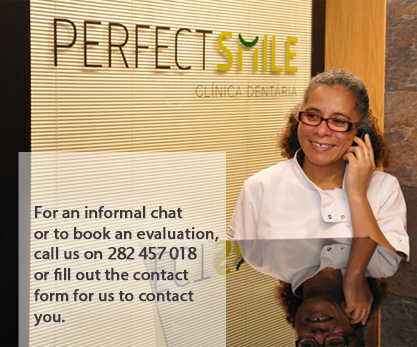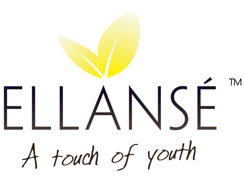 Discolouration
Discolouration
Cutaneous ageing signs such as discoloration become visible from as early as the twenties, especially with excessive sun or environmental exposure.
Clínica Privé Tip
Between the ages of 35 to 49 years, there is a sharp increase in prevalence of skin changes, clearly ascribable to photo-aging such as pigmented spots and discoloration of the skin. Awareness of the damaging effect of UV radiation on the body and sun avoidance and protection before the age of twenty will help reduce the risks for developing discoloration lesions later in life.
Ageing skin unsettles women more than men because society believes a woman loses her attractiveness once visible signs of facial ageing set in. Characteristics of an aging skin (on the face or body) include, fine and coarse wrinkle formation, pigmentation changes, sallow color, dry texture, loss of elasticity, loss of skin tone, sagging subcutaneous tissues, underlying muscle hypertrophy and volume loss.
Ageing skin is associated with a range of cosmetic concerns - from pigmentation problems and splotchy skin to redness due to enlarged vessels or capillaries, all causing discoloration of the skin especially on sun exposed areas such as the face, neck and décolleté. Photo ageing caused by ultraviolet light exposure, tends to act more on the surface of the skin. There are sun freckles or irregular pigmentation and dilated blood vessels (often referred to as "broken" blood vessels) that lead to an overall uneven tone and discoloration.
Home therapies:
At Clínica Privé we offer traditional topical home therapies such as AHA s, PHA s, Retinoids, Potent Anti-Oxidants that protect against infra red A, Topical treatments containing pigmentation inhibitors (tyrosinase inhibitors) and Hydroquinone to treat discoloration as well as recent advances in pigmentation technology. Clínica Privé also offers the latest and best in product technology when treating pigmentation. Amongst these well researched and well published products are: BRIGHTENEX, MELAMIN and MELAMIX, in the ZO® MEDICAL System.
The ZO® MEDICAL system is a 3 to 4 month home treatment course of powerful skin lighteners, exfoliators and skin penetrators. You stop using your normal skin care products and use only the ZO® products because they work synergistically. The exfoliators and penetrators allow the skin lighteners to reach down deep into the skin to treat the really stubborn pigment.
Patients are instructed to use ZO® MEDICAL for a total of 3 or 4 months because the powerful skin lightening medicine (hydroquinone) isn’t something that should be used indefinitely. Patients are instructed on product use by our aesthetician who has been certified and trained in the ZO® System.
The powerful ingredients in the ZO® MEDICAL can be irritating to skin and our aesthetician is available to help patients troubleshoot product usage. Our Sensitive Skin facials work wonders to soothe the skin during the ZO® MEDICAL treatment process and we recommend them given at monthly intervals. If the skin begins to flake or peel, a gentle HydraFacial MD® treatment followed by a calming facial can really get the skin looking lovely.
Trouble Shooting: The powerful exfoliators and skin penetrators can be irritating. When your skin begins to get red and sensitive, stop using the GLYCOGENT or RETAMAX for a day or so until the sensitivity subsides. The same goes for the tretinoin. You may find that only certain areas of your face are sensitive and in that case, we recommend that you just stop using these products in those areas.
The ZO® MEDICAL results really are transformational. Skin becomes luminous, pigment more even and the skin texture is refined. The best results are obtained with supervised counseling by knowledgeable skin professionals who are experienced with the ZO® MEDICAL. The ultimate process is to combine the ZO® MEDICAL system with monthly calming facials and if needed, HydraFacial MD® treatments.
In Office therapies:
Depending on the extent of sun-damage to the skin, recommended treatments might include ZO® Controlled Depth Peel, Vbeam Laser Photofacial or CO2RE Fractional Laser Resurfacing, however we recommend patients start on topical skincare including ZO® SKIN HEALTH System and ZO® MEDICAL System. These physician dispensed, pharmaceutical-grade home-treatment protocols provide the skin with safe, effective and tested lightening agents including Vitamin C & Hydroquinone.
We have learnt that when treating skin conditions including pigmentation with lasers, we can minimize risk by using skincare products.
The ZO® MEDICAL System is more aggressive than ZO® SKIN HEALTH System. At the start of the course, the skin may become red and flakey – this is a normal response which we are expecting and it is this exfoliating (caused by increased cell turnover catalyzed by the Vitamin A) which helps treat the pigmentation.
Lack of sun during the autumn and winter months plays a great advantage and makes this the perfect time to treat sun damage that has been building up cumulatively over the years.
The new concept today is to start with photo rejuvenation devices and preventative products early, so as to prevent the deterioration of skin color and texture, as one gets older.
What is infra Red A?
A new concept in accelerated skin ageing and discoloration is infra red A. Infra red A is found in any visible light that emits heat such as sunlight, fluorescent lights, computer screens, hair dryers etc. Normal sunscreen/SPF does not protect against infra red A. Topically applied topical anti oxidants such as Vit C, Vit E, Phloretin and Ferulic acid protect against infra red A. Any successful discoloration treatment plan should include the topical anti oxidants mentioned above.
In addition, the success in the treatment of any discoloration and/or pigmentation changes also relies on the client’s awareness and requires them to be diligent in applying sun protection to the face, neck and décolleté on a daily basis. This may require making positive lifestyle changes, such as always wearing a hat, using sunglasses and generally limiting sun exposure.
What is safe sun exposure?
Without a shadow of a doubt, sunlight is the largest single source of vitamin D3 for most people. It is important to not expose yourself to too much sun, as this can be harmful too. It has been calculated that if you expose your skin to sun in a bathing suit long enough to produce slight redness of the skin, you'll produce the equivalent of 10,000-25,000 IU of oral vitamin D. Just five to ten minutes in the sun two to three times a week, exposing your hands, legs, and arms, is more than adequate to satisfy your vitamin D requirements, and you're not likely to significantly increase your risk of skin cancer in the process. After your five to ten minutes of sun exposure, apply a broad-spectrum sunscreen of minimum SPF 50 for the rest of your time in the sun. The good news is that you can't overdose on the vitamin D manufactured by your skin.
What exactly makes vitamin D3 so important to our health?
Quite simply, it directly and indirectly influences most of what happens in our bodies every second of every day. Vitamin D 3 isn’t actually a vitamin. Rather, it’s a hormone precursor, the active component of which Calcitriol (the actual hormone) attaches to more than 2,700 sites on the human genome, and it turns on more than 1,000 genes, prompting them to do their jobs. In fact, Vitamin D 3 probably affects every disease the body can contract. The evidence is particularly strong when it comes to vitamin D’s role in resisting infection, maintaining bone and muscle, and reducing cancer risks. It is these fundamental roles of vitamin D 3 that affect our risk for so many different diseases.









